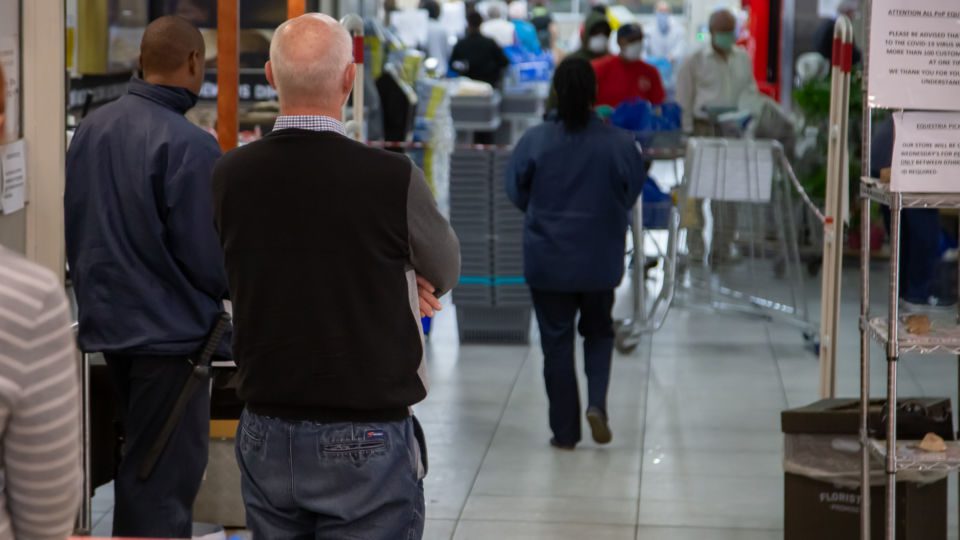The COVID-19 pandemic has led to one of the worst financial quarters in retail’s modern history, and the near-universal rise in e-Commerce sales is of little comfort to retailers that are staring down double-digit declines in their brick-and-mortar businesses. But while this is an unprecedented time in many ways, the results tell a story that has been heard before: successful retailers are strengthening their positions, while struggling companies falter.
“The retailers that are in trouble now were in some level of trouble ahead of this: either bad balance sheets, bad business models or both,” said Charlie O’Shea, Senior Retail Analyst at Moody’s in an interview with Retail TouchPoints. “The bad business model generally results in a bad balance sheet. If you’re a low-rated retailer from a credit perspective, there’s a reason you’re down there. It’s because your liquidity is weak, you have too much leverage — which means you have too much debt — and your competitive position is weakening. It’s a perfect storm.”
This has caused struggling retailers like Tailored Brands to explore the possibility of bankruptcy, while leading to the tipping point for long-suffering brands like JCPenney, and causing some already bankrupt companies, like Pier 1, to enter outright liquidation. The misery of the quarter was felt across the industry, worsening the traffic downturn’s effects on the most vulnerable companies.
Successful Omnichannel Retailers Reap E-Commerce Benefits
Essential retailers with strong online positioning are surviving, and even thriving, under these conditions, but they aren’t succeeding due to e-Commerce alone. Even high online sales during Q1 weren’t enough to offset the loss of brick-and-mortar traffic, but these companies were able to offer safe, contactless options that maintained convenience and a connection with customers, even during the lockdown.
Advertisement
“It’s not just about enabling digital, it’s about the acceleration of the digital capabilities and the connection of those digital capabilities to the stores that were able to open,” said Hilding Anderson, Head of Retail Strategy at Publicis Sapient in an interview with Retail TouchPoints. “What Walmart, Target and Lowe’s have been able to do is use digital to accelerate traffic to the stores, and find that complementary relationship between digital activity and in-store activity. Retailers that were unable to stay open or had a weaker digital presence struggled during this period.”
These three retailers didn’t luck into their Q1 e-Commerce success. Their positive results derived from a continued dedication to growing their online and omnichannel capabilities, not scrambling to roll out features after the pandemic hit:
- Walmart posted a 74% e-Commerce sales increase, and it is still capitalizing on the moment through partnerships with ThredUP and Shopify;
- Target handled its 141% increase in digital comparable sales by harnessing its well-established store fulfillment network to handle nearly 80% of all digital purchases; and
- Lowe’s saw an 80% increase in online sales, and it started collaborating with Google Cloud earlier this year to modernize its e-Commerce and other systems.
Purchasing Trends Put Pressure On Margins, But It’s Not Necessarily A Bad Thing
One recurring theme even among successful retailers was tighter margins. Costco’s overall results were somewhat weighed down by shoppers purchasing more inexpensive consumables and fewer big-ticket items like luggage, and even Amazon experienced a “slight margin hiccup” due to its high volume of online grocery sales during Q1, according to Simeon Hyman, Global Investment Strategist at ProShares. Shoppers are quickly becoming more accustomed to buying groceries online, and retailers need to adjust accordingly.
“I was a retail consultant in the late 90s, and when the very first stirrings of e-Commerce came about, we actually thought that grocery would never make it meaningfully online,” said Hyman in an interview with Retail TouchPoints. “Not because people wanted to squeeze the avocados and the melons, but because when you go to a grocery store, you’re basically walking into a warehouse and you’re picking and packing your own shopping cart. We thought that the economics of delivering one $100 item to your house was profitable, but how are you going to make money delivering 100 $1 items? Now it’s 20-odd years later, and we’ve just about figured it out. Walmart specifically is going to figure out how to get the margins appropriately sized in grocery, likely within the next several quarters.”
Retailers lucky enough to benefit from these lower-margin consumable sales should be taking advantage of the situation, even if they’re not going to be able to match Walmart’s logistics and fulfillment capabilities. The short-term impact on margins can be more than offset by the long-term opportunities in customer acquisition and retention.
“You’ve seen what Target announced, where sales are up but margins are down because of the mix,” said O’Shea. “Apparel sales are down, consumables are up — and consumables are lower margin. Is that a bad thing? Absolutely not. You get people that may not have shopped in your store for food and consumables, and maybe they’ll continue to do that on the other side of this.”
Mergers And Acquisitions May Be Dormant, But They’re Not Dead
The pandemic’s impact on physical retail was one of the major factors in Simon Property Group’s calling off its acquisition of Taubman Centers. This is likely a sign that brick-and-mortar mergers and acquisitions (particularly mall-based deals) will slow down significantly, if not temporarily cease altogether. However, the retail segments that have thrived during the Q1 downturn may still see room for expansion.
“I expect overall activity will continue to drop, but that there will continue to be pockets of M&A,” said Lisa Tolliver, Senior Director at Capstone Headwaters in an interview with Retail Touchpoints. “Many deal processes were slowed down or put completely on hold and as such, we are hearing from investors that deal flow has slowed significantly. We view this as an opportunity for companies that were deemed ‘essential’ and have continued to perform well through the pandemic. There is scarcity value in the current M&A market for these types of opportunities and we are actively in dialogue with businesses like this.”
Additionally, some private equity firms that wouldn’t normally make turnaround investments are “being more opportunistic” when looking at the current slate of possibilities, according to Tolliver. The number of deals may slow down, even with the spike in vulnerable retailers declaring bankruptcy, but companies that are careful doing their homework can still find the right opportunities.
“One of the key elements, which was highlighted by the unraveling of the [Simon/Taubman] deal, is to say to yourself, ‘What role would M&A have here?’” said Hyman. “The challenge of M&A is that retail is so brand specific. You expect in difficult times for some mergers of necessity to emerge, but it’s not going to be an easy task for many retailers to find to find the right dance partner.”
The Rich Will Get Richer — But Everyone Must Prepare For The Future
Even given how unprecedented the COVID-19 pandemic has been for retailers, O’Shea noted that it was “interesting how little flex there was” for many companies as they tried to navigate the crisis. The Q1 2020 results put the cracks in retail’s foundations on display, and many players are going to need third-party help to continue operating — including potential partnerships with rival retailers.
“Their positions have been weakened so much by the pandemic that it’s unlikely they’ll make it alone, so someone has to throw these retailers a life preserver or they’re going to drown over time,” said O’Shea. “They’re going to be throwing a lot of different levers here. Those that do not have compelling online businesses for whatever reason will have to explore tie-ups with Amazon, Walmart, Target or Shopify — whoever is out there offering a third-party marketplace. We’ll see how it plays out.”
Retailers need to spend the recovery and reopening period positioning themselves for an uncertain future. It’s entirely possible that another wave of COVID-19 will appear later in 2020, including during Q4, which will be a vitally important period for companies looking to make up ground lost during Q1.
“I think that this holiday season is going to be a really challenging one for a lot of reasons,” said Anderson. “Retailers will be grappling with the financial situation, plus there is a lot of uncertainty around how many customers are going to come out if there is a second wave or a third wave at that time. I think what you’re going to see is the companies that have the most agility and that have really built the digital infrastructure to have flexibility will be the ones that are able to cope best with a continued crisis.”









